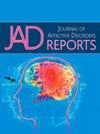Examining the latent structure of adverse childhood experiences in a sample of adults from the United States using exploratory structural equation modelling
Q3 Psychology
引用次数: 0
Abstract
Background
A considerable amount of research has been conducted to determine the detrimental impacts that adverse childhood experiences (ACEs) can have on physical and mental health. Many studies have used ACE questionnaires to measure these events; however, there is some debate regarding the proper theoretical model for ACEs. This study was conducted to evaluate the most commonly used 10-item ACE questionnaire to determine the latent structure of ACEs in the context of psychological wellbeing and internalizing psychopathology.
Methods
A representative sample of adults (n = 1839) in the United States completed self-report measures. Exploratory Structural Equation Modelling (ESEM) was utilized to explore the latent structure of ACEs in the presence of negative and positive mental health outcomes and controlling for sex and race/ethnic categories.
Results
A one-factor model of the ACEs questionnaire provided reasonable fit to sample data and was deemed the most interpretable solution. The ACEs latent variables were positively correlated with internalizing psychopathology (β = 0.52) and negatively associated with psychological wellbeing (β = −0.44). Females had higher ACE scores and several racial/ethnic group differences were evident.
Conclusion
The optimal representation of the latent structure of the ten ACE items is a unidimensional structure. Implications for assessment and research are discussed.
利用探索性结构方程模型研究美国成人样本中不良童年经历的潜在结构
背景:为了确定不良童年经历(ace)对身心健康的有害影响,已经进行了大量的研究。许多研究使用ACE问卷来测量这些事件;然而,关于ace的正确理论模型存在一些争论。本研究评估了最常用的10项ACE问卷,以确定ACE在心理健康和内化精神病理学背景下的潜在结构。方法在美国选取具有代表性的成人样本(n = 1839)完成自我报告测量。采用探索性结构方程模型(探索性结构方程模型)探讨消极和积极心理健康结果存在的潜在结构,并控制性别和种族/民族类别。结果ace问卷的单因素模型与样本数据拟合合理,是最具解释性的解决方案。ace潜在变量与内化精神病理呈正相关(β = 0.52),与心理健康负相关(β = - 0.44)。女性的ACE分数更高,几个种族/民族的差异也很明显。结论10个ACE项目潜在结构的最优表征为单维结构。讨论了评估和研究的意义。
本文章由计算机程序翻译,如有差异,请以英文原文为准。
求助全文
约1分钟内获得全文
求助全文
来源期刊

Journal of Affective Disorders Reports
Psychology-Clinical Psychology
CiteScore
3.80
自引率
0.00%
发文量
137
审稿时长
134 days
 求助内容:
求助内容: 应助结果提醒方式:
应助结果提醒方式:


